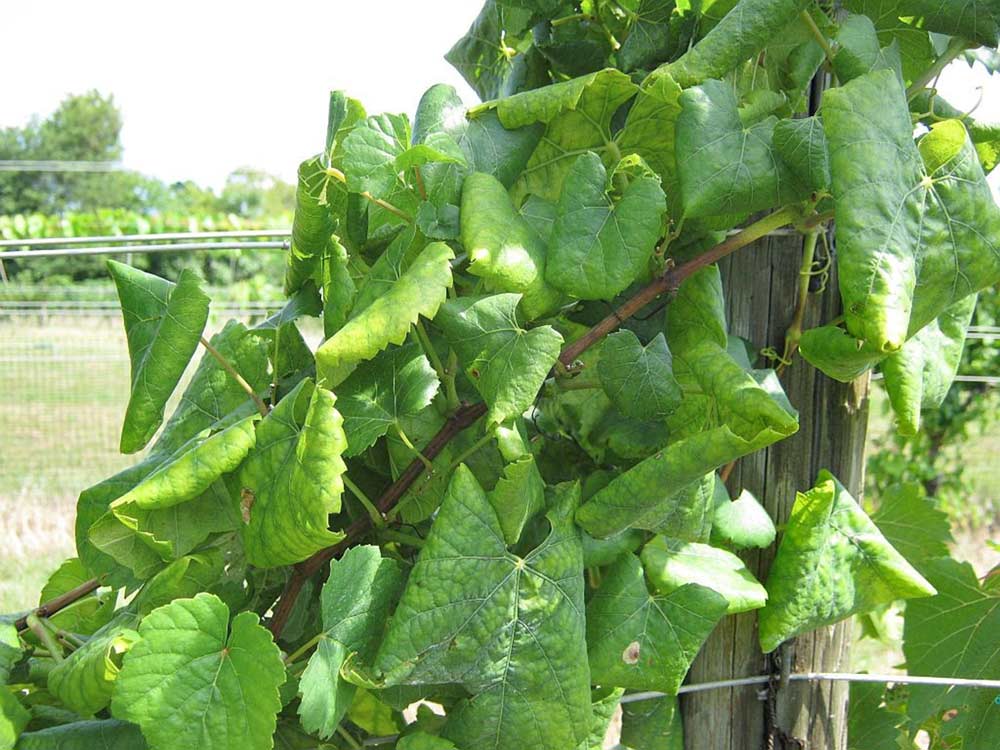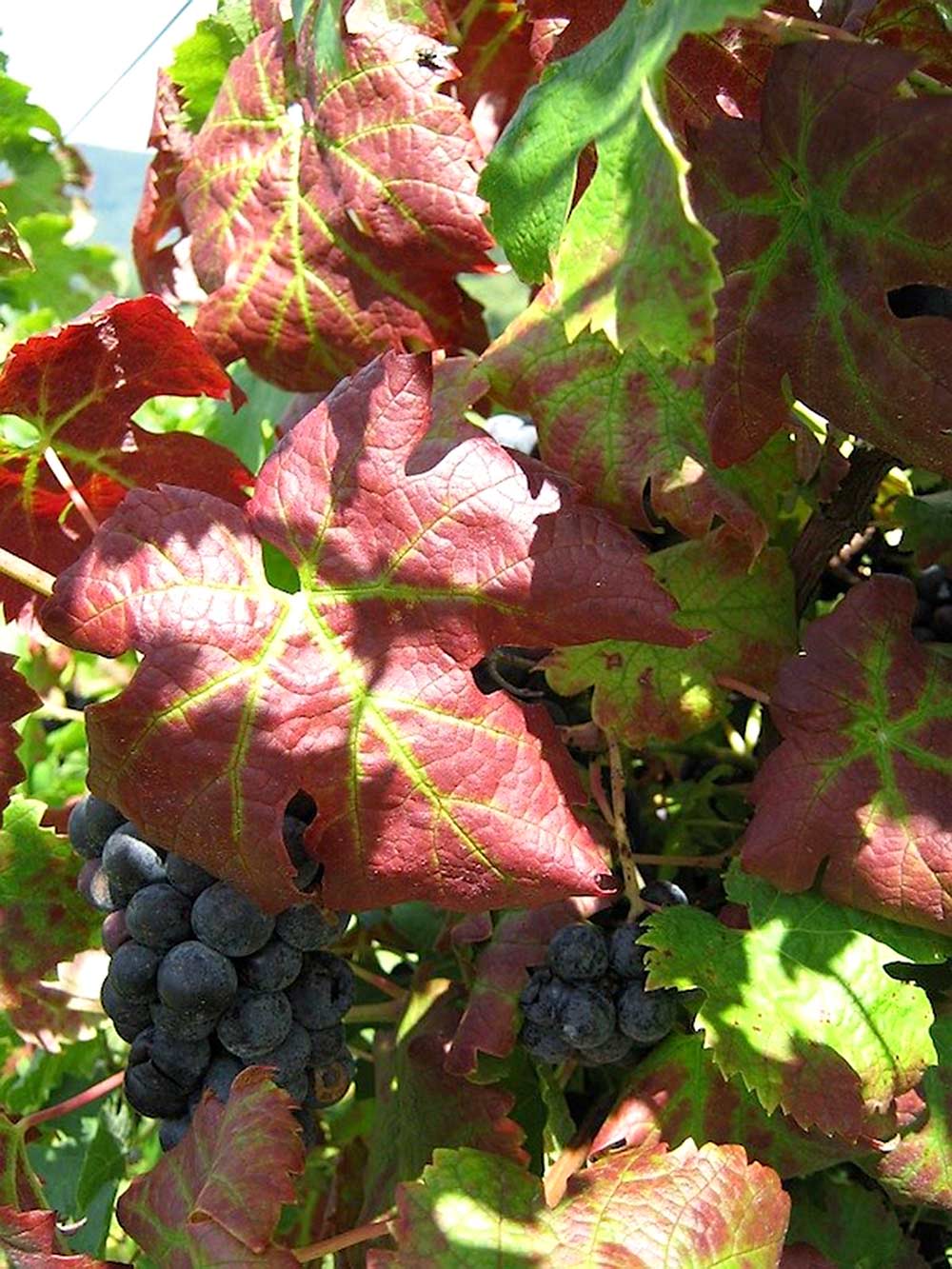
A plant infected with grapevine leafroll disease.
(Photo courtesy of Hemantkumar Gohil)
For growers, grapevine leafroll disease presents a costly problem. It can go unnoticed in vineyards for years as disease symptoms sap productivity, but once they recognize it, the only solution is costly removal and replanting with clean plants.
Leafroll disease challenges researchers as well, because it’s caused by a group of particularly large, complex viruses that are difficult to study. But Washington State University pathologist Naidu Rayapati and his team just took a significant step toward understanding the disease: cloning the most common and virulent virus that causes leafroll disease, known as leafroll 3.
“The traditional approaches don’t work to understand this disease,” he said, explaining that the large virus could not be isolated from infected vines or transmitted to healthy ones for research purposes without breaking. “There was no way we could use any other method except going to DNA technology to make this synthetic copy to answer our questions.”

Naidu Rayapati
Rayapati and his research associate, Sridhar Jarugula, worked with a team of researchers at the University of Florida who had recently figured out how to clone a cousin of grapevine leafroll virus that targets citrus. It took about a year to develop the technology to make the clones using a soil bacterium to transfer the viral DNA into the cells of tobacco plants, where new virus particles formed.
Armed with copies of the virus, the researchers can now start to explore how it works. Turning genes on and off will reveal which genes cause the damaging symptoms or enable mealy bugs to transmit it, for example. They can also use it to infect grapevines or other plants for studies in the lab.
While it’s impossible to develop a plant vaccine, understanding how the virus works will provide insight for how plants could resist it. In the future, gene editing techniques could then be used to develop a leafroll virus-resistant grapevine, Rayapati said.
“We need to understand the weak link in the virus genome so we can target that key part,” he said. “These are all future opportunities, but the first step is to have the ability to manipulate the virus genome, and that’s the kind of thing we can do now.”
Rayapati made no promises about when the research might reach those next steps but said that the work to understand the virus is underway. The research effort is supported by WSU and the Washington Wine Commission.
“This is one of the most complex viral diseases, so we are lucky to achieve this success so far and we’ll be continuing to do this research,” he said. •
—by Kate Prengaman

An example of grapevine leafroll disease.
(Photo courtesy of Hemantkumar Gohil)






Leave A Comment